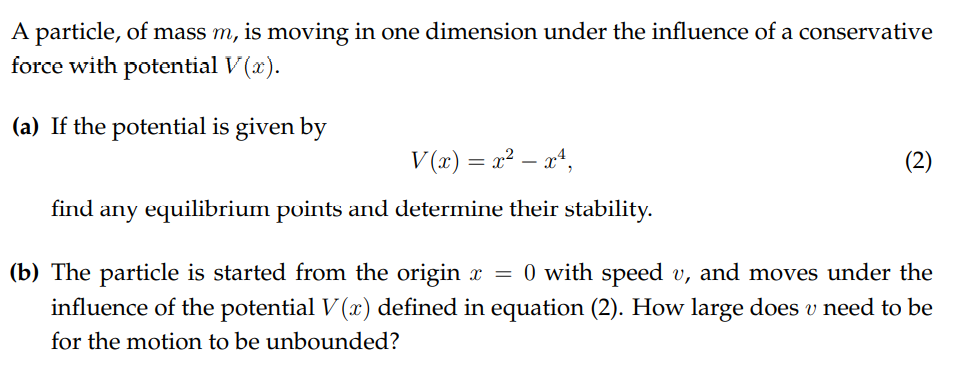A particle, of mass m, is moving in one dimension under the influence of a conservative force with potential V (x). (a) If the potential is given by V (x) = x² – xª, (2) find any equilibrium points and determine their stability. (b) The particle is started from the origin x = 0 with speed v, and moves under the influence of the potential V (x) defined in equation (2). How large does v need to be for the motion to be unbounded?
A particle, of mass m, is moving in one dimension under the influence of a conservative force with potential V (x). (a) If the potential is given by V (x) = x² – xª, (2) find any equilibrium points and determine their stability. (b) The particle is started from the origin x = 0 with speed v, and moves under the influence of the potential V (x) defined in equation (2). How large does v need to be for the motion to be unbounded?
Related questions
Question

Transcribed Image Text:A particle, of mass m, is moving in one dimension under the influence of a conservative
force with potential V (x).
(a) If the potential is given by
V (x) = x² – x*,
(2)
-
find any equilibrium points and determine their stability.
(b) The particle is started from the origin x = 0 with speed v, and moves under the
influence of the potential V (x) defined in equation (2). How large does v need to be
for the motion to be unbounded?
Expert Solution
This question has been solved!
Explore an expertly crafted, step-by-step solution for a thorough understanding of key concepts.
This is a popular solution!
Trending now
This is a popular solution!
Step by step
Solved in 4 steps
